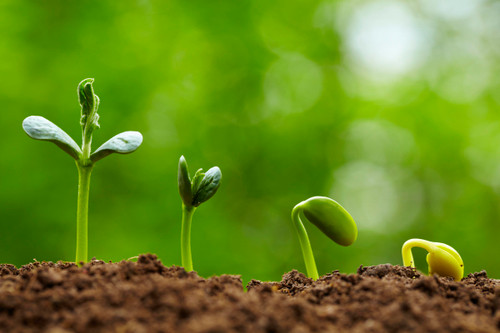Ever since I was little, one of my all-time favorite plants and perfume scents has been eucalyptus. I couldn’t really tell you why, it just always has been a personal favorite of mine! Eucalyptus has been a staple in my household as well as in my college dorm rooms’ for years. My mom taught me a while back to hang the plant on a shower head so whenever the hot water steamed up a bathroom, the infamous scent the plant releases would circulate in the room. Though I have multiple toiletry/skin care products and a few plants hanging in various showers, I realized I didn’t have much knowledge about the plant itself. I decided to do some research about the plant in general as well as find any benefits it offers, and lastly some fun facts!
For some background, I learned that eucalyptus is a genus that contains many hundreds of species all within the Myrtaceae family. All of the species within the eucalyptus genus do not produce petals, hence their “leafy” appearance. The genus originated primarily in Australia and Tasmania, however they can also be found on nearby islands as well. These trees are also known by the names of “gum trees” and “stringybark trees”. Through further research I found that the oil derived from these plants and tree’s has been used in medical practices (it can be found in some cough syrups and medicines that assist in lowering fevers), aromatherapy practices (a yoga class I used to go to had eucalyptus scented incense), as well as in body lotions, face mists, and various other skincare products.
The plants leaves (dried or fresh) are also commonly used for air fresheners and in medicinal teas! The tree’s themselves grow very fast, and also serve beneficial purposes for the environment. Eucalyptus trees are known to be able to prevent waste water issues, and can prevent the disease Malaria. A random fun fact I stumbled upon at this point in my research was that Koala bears mainly survive off of eating eucalyptus (and dirt too which I found to be kind of funny).
Overall, eucalyptus serves many different purposes to both humans and nature- some beneficial and some, just harmless. After diving into this general topic, I was able to answer the question I had that inspired me to write about the plant: Is Eucalyptus beneficial to hang in showers? Yes! Though the benefits might not be life-altering, it doesn’t hurt to have a calming and stress relieving scent filtering throughout your bathrooms at home.
Resources
Informative articles:
Harrell, Elizabeth, et al. “Useful Eucalyptus: The Many Uses Of Eucalyptus: Everyday Health.” EverydayHealth.com, www.everydayhealth.com/healthy-living/alternative-health/useful-eucalyptus-many-uses-eucalyptus/.
“Eucalyptus.” Encyclopædia Britannica, Encyclopædia Britannica, Inc., www.britannica.com/plant/Eucalyptus.
Photographs:
Nature News, Nature Publishing Group, blogs.nature.com/. “Just Fun Facts.” Just Fun Facts | Fun and Interesting Site, 10 Apr. 2021, justfunfacts.com/.


































